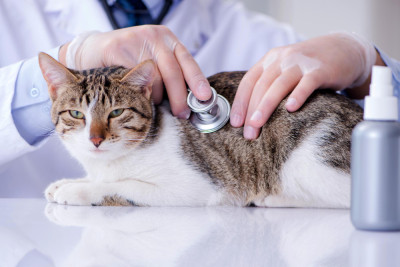What Causes Cat Allergies?
Cat allergies are primarily triggered by proteins found in a cat's skin cells, urine, and saliva. These proteins are known as allergens and are produced by cats to groom themselves. When allergens become airborne and are inhaled or come into contact with a person's skin or eyes, they can trigger an allergic reaction. The two most common allergens associated with cats are:
-
Fel d 1: This allergen is primarily found in a cat's skin cells and is released into the environment through shedding fur and dander.
-
Fel d 4: This allergen is found in a cat's saliva and is spread onto the fur during grooming. When the cat licks itself, it can transfer Fel d 4 allergens to its fur.
Common Symptoms of Cat Allergies
Cat allergies can manifest in various ways, and symptoms may range from mild to severe. The most common symptoms of cat allergies include:
-
Sneezing and Runny Nose: Allergic reactions often lead to sneezing, a runny or stuffy nose, and postnasal drip.
-
Itchy or Watery Eyes: Red, itchy, and watery eyes are common signs of cat allergies.
-
Skin Reactions: Skin itching, hives, or a rash may occur upon contact with allergens.
-
Coughing and Wheezing: Some individuals may experience coughing, wheezing, or chest tightness.
-
Asthma Exacerbation: People with asthma may find that cat allergens trigger or worsen asthma symptoms, leading to difficulty breathing.
-
Fatigue: Allergic reactions can be exhausting, leading to fatigue and a general feeling of unwellness.
-
Itchy Throat or Palate: An itchy throat or palate may result from inhaling cat allergens.
Managing Cat Allergies
While it may be challenging to completely eliminate cat allergens from your environment, several strategies can help manage cat allergies effectively:
1. Create Allergy-Free Zones:
- Designate certain areas of your home as allergy-free zones where your cat is not allowed. Ideally, this includes the bedroom.
- Use high-efficiency particulate air (HEPA) filters in these areas to reduce allergen levels.
2. Regular Cleaning:
- Vacuum your home frequently using a vacuum cleaner equipped with a HEPA filter to trap allergens.
- Wash your cat's bedding and toys regularly.
- Dust surfaces with a damp cloth to prevent allergens from becoming airborne.
3. Bathing and Grooming:
- Regularly groom your cat by brushing its fur outside to minimize shedding.
- Consider using cat wipes or dander-reducing sprays to help control allergens on your cat's fur.
- Some hypoallergenic cat breeds produce fewer allergens and may be an option for allergy sufferers.
4. Wash Hands and Clothes:
- Wash your hands and change clothes after handling your cat.
- Avoid touching your face, especially your eyes, nose, and mouth, while interacting with your cat.
5. Allergy Medications:
- Over-the-counter antihistamines and decongestants can help relieve mild allergy symptoms.
- Consult with an allergist for prescription allergy medications if your symptoms are severe.
6. Allergen Immunotherapy:
- Allergen immunotherapy, such as allergy shots or sublingual tablets, may be recommended for individuals with severe cat allergies.
- These treatments can help desensitize the immune system to cat allergens over time.
7. Consult an Allergist:
- If your cat allergies are severe and significantly affect your quality of life, consult an allergist for a comprehensive evaluation and personalized treatment plan.
Conclusion
Cat allergies can be challenging, but with proper management and preventive measures, it's possible to coexist comfortably with your feline companion. Understanding the causes and symptoms of cat allergies is the first step toward effective management. By implementing these strategies and seeking guidance from medical professionals when necessary, you can enjoy the company of your beloved cat while minimizing the impact of allergies on your daily life.







